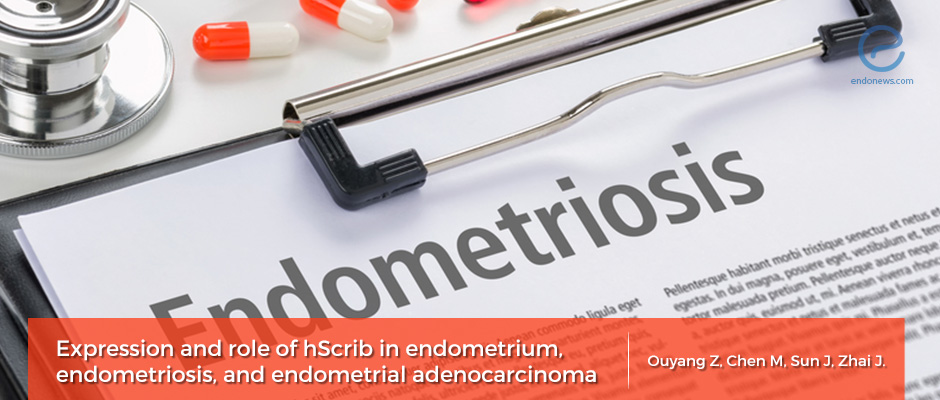The role of adhesion molecules, E-cadherin and hScrib, in endometriosis
Apr 29, 2019
The decreased expression and mislocalization of hScrib is parallel to the clinical stage of endometriosis
Key Points
Highlights:
- Though endometriosis is a benign disease, it has the ability to plant, erode, and metastasize. In other words, endometriosis is a “benign gynecological disease with some similarities to cancer.”
- E-cadherin and hScrib have roles in cell to cell adhesion, inhibition of cell proliferation and migration. The decreased expression and mislocalization of hScrib is correlated with the clinical stage of endometriosis.
Importance:
- The alterations of adhesion molecules E-cadherin and hScrib contribute to the pathogenesis of endometriosis.
What's done here:
- In this retrospective study, cell adhesion molecules E-cadherin and hScrib were investigated in patients with endometriosis and endometrial adenocarcinomas.
- 240 women where serum and tissue samples from 80 ovarian endometriosis, 80 endometrial adenocarcinomas, and 80 control venous blood specimens were analyzed.
- Adhesion molecules E-cadherin and hScrib were determined by ELISA in the serum, by immunohistochemistry and immunofluorescence in the tissues.
Key Results:
- The levels of serum soluble E-cadherin and hScrib were significantly highest in endometrial adenocarcinomas, followed by endometriosis, and healthy control women (P<.05).
- hScrib protein content showed opposite results in the tissues (P<.05), having a negative correlation with the stage of endometriosis.
- Decreased expression and mislocalization of hScrib were found to be correlated with the clinical stage of endometriosis in the tissues.
Lay Summary
Dr. Zhuo Ouyang and associates from the Capital Medical University, Beijing, China have recently published their research related to adhesion molecules in "Medicine (Baltimore)".
Endometriosis is a “benign gynecological disease with some similarities to cancer”. Adhesion molecules E-cadherin and hScrib have roles in the establishment of apical-basal polarity besides enhancing cell to cell adhesion, inhibition of cell proliferation and migration thus having an important role in physiological cellular homeostasis.
This retrospective study analyzed 240 women consisting of 80 ovarian endometriosis, 80 endometrial adenocarcinoma tissues besides 80 control venous blood specimens. E-cadherin and hScrib were determined by ELISA in the serum, by immunohistochemistry and immunofluorescence in the tissues.
Serum soluble E-cadherin and hScrib levels were significantly highest in endometrial adenocarcinomas, followed by endometriosis (P<.05). hScrib protein content showed a significant negative correlation with the revised American Fertility Society (rAFS) stage in endometriosis. Decreased expression and mislocalization of hScrib were found correlated to the clinical stage of endometriosis in the tissues.
This is the first study demonstrating the expression of hScrib being present consistently at the broad basolateral membrane of the glandular epithelium and at the cell to cell boundaries in normal endometrium and stages I and II ovarian endometriosis, but the expression was rarely observed in the plasma.
As the clinical stage of endometriosis progresses, the expression of hScrib becomes weaker and the hScrib localization changes from membrane to cytoplasm. In addition, hScrib levels in serum and expression in tissues in stage IV endometriosis and stage I endometrial adenocarcinoma was similar. Co-localization of hScrib with E-cadherin at the broad basolateral membrane of the glandular epithelium and at the extensive cell to cell boundaries in endometriosis was a unique finding in this study. The cumulative data in this research show that hScrib may participate in the process of endometriosis contributing to epithelial-mesenchymal cell transition by regulating the expression of E-cadherin.
The issue of using hScrib and E-cadherin serum levels as new diagnostic markers of endometriosis needs further validation studies.
Research Source: https://www.ncbi.nlm.nih.gov/pubmed/30702562
cell adhesion molecules E-cadherin hScrib endometrial adenocarcinoma

